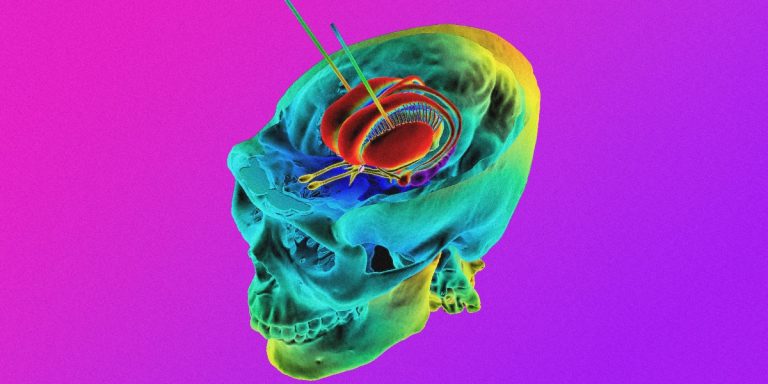
The risks are not merely economic ones that hurt our knowledge- and technology-intensive economy; they are strategic ones that threaten our national and global security. We need our powerful innovation ecosystem to become both more agile and more robust in the face of them.
Our federal government has a key role here that only it can play. Risk assessments at the federal level must become more holistic and integrated, examining the effect of one danger on another. In conjunction with universities and industry, a government coordinating body should be planning for hazards that could compound other hazards—and offering strategic focus and funding for discoveries and innovations designed to respond to and mitigate them as part of an overall innovation policy.
When crises do emerge, the federal government needs to be able to assemble resources, and to quickly mobilize all aspects of our innovation ecosystem—from research through manufacturing and distribution—to stem the damage.
Our current crisis offers a precedent for the future: in March 2020, as the pandemic flared, Rensselaer Polytechnic Institute, MIT, IBM, the Department of Energy National Laboratories, and others swiftly joined forces to create the COVID-19 High Performance Computing Consortium. A number of important findings emerged from consortium projects, including the identification of drug compounds that could be repurposed to fight covid-19. With the consortium as a model, the National Science and Technology Council has now published the blueprint for a National Strategic Computing Reserve to provide standing computing support for future emergencies.
Fortifying supply chains
If we are to learn from the pandemic, the strategic vulnerabilities that must be addressed include, of course, global supply chains. Intended to be efficient and cost-saving, a number of them proved insufficiently resilient in a crisis. The federal government must determine where bottlenecks could set off cascading consequences and plan for ways around them, in part by improving our ports, expanding our domestic stockpiles, working with our allies to establish new sources of key goods, and supporting domestic manufacturing capacity for critical supplies.
Having experienced shortages of everything from life-saving personal protective equipment to swabs and reagents for testing during the pandemic, the United States clearly needs to focus on medical supplies and key pharmaceutical ingredients. Other critical products include semiconductors, which underlie so many innovations; a shortage of them has forced plant closures in the automotive industry. A particular problem in this case is that 92% of the most advanced chips are manufactured in Taiwan. With China insisting that Taiwanese reunification with the mainland is inevitable, the risks here include a conflict between great powers and disruption to industry around the globe.
Modern manufacturing
While the United States continues to lead in the research and development aspects of the semiconductor industry, it is at a disadvantage in manufacturing, which is extremely capital intensive and which costs less in other nations, in part because of government subsidies. We need the federal government to step into the breach here. The Innovation and Competition Act passed by the Senate, which includes $52 billion to boost domestic chip production, offers a good start.
We also need to address potential bottlenecks in raw materials that could greatly weaken our economic and national security. China has near monopolies in some of the materials used in advanced technologies. It is the world’s major supplier of so-called rare earth elements—minerals that are crucial to electronic products of all kinds. Cobalt and lithium, which are used in lithium-ion batteries, are also key, especially as we move toward the increased use of electric vehicles. China refines an estimated 58% of the world’s lithium and 65% of the world’s cobalt, much of which is mined in the Democratic Republic of the Congo by Chinese-owned companies.There are domestic sources for some of these resources, such as cobalt in Idaho.But identifying alternative ways to process represents a critical way to address this problem in the short term.
For the long term, we must invest in research and development to help us bypass such chokepoints by finding ways to use more earth-abundant materials. And we must invent new materials as well. The federal Materials Genome Initiative (MGI) was launched in 2011 during the Obama administration, while I was a member of PCAST, to harness powerful data and computational tools for discovering new materials through experimentation—and putting them to commercial use more quickly. Currently, the MGI is working to unify a broadly accessible Materials Innovation Infrastructure, where tools and knowledge are shared to accelerate research, development, certification, and deployment.
The looming climate crisis and beyond
Other areas critical to economic and national security are those that can mitigate climate change—everything from direct air capture of carbon dioxide to smaller, safer advanced nuclear reactors to—down the road—commercial-scale fusion energy. We also need to view such systems within the context of our built environment, which generates about 40% of annual global carbon emissions through construction. Our cities are not optimized for sustainability, climate resilience, or human well-being. We need advanced technological solutions—renewable energy systems, sentient building platforms, new materials—to decarbonize the systems of our daily lives and make sure they work for the benefit of all.
Our vulnerabilities in cybersecurity—particularly in physical systems that give bad actors an opening to cause grave damage from afar—indicate that we need to work vigorously on creating inherently secure quantum communication technologies and moving toward a quantum Internet. To protect our vulnerabilities and minimize the consequences of disasters, we must advance both artificial intelligence— with its capacity to make predictions based on imperfect information—and quantum computation, which lends itself to solving complex optimization problems.
Pandemic preparedness and early warning systems for health threats are also a clear priority. We have underfunded basic research on infectious diseases and must correct this. We already have considerable disease surveillance capabilities that should be deployed in a more strategic and coordinated way.






